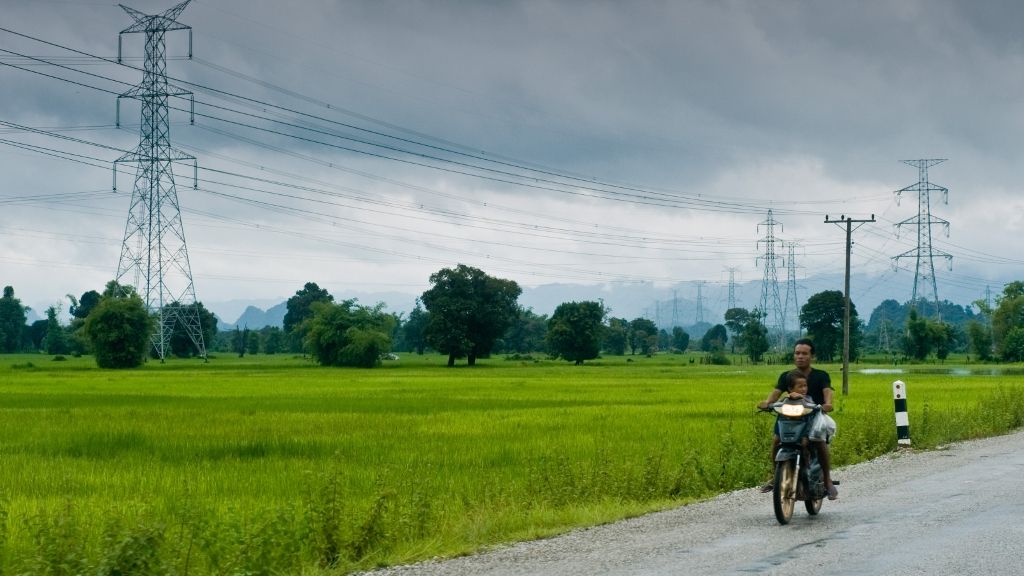Solid Growth Expected for Lao PDR in 2017 and 2018 - ADB

Lao PDR's economic growth is picking up in 2017 and 2018, supported by the expansion of production and sales of electricity as well as buoyant services sector growth, among others. Photo: ADB.
VIENTIANE, LAO PDR (6 April 2017) — Economic growth is picking up in the Lao People’s Democratic Republic’s (Lao PDR) in 2017 and 2018, supported by the expansion of production and sales of electricity, a buoyant services sector growth, and construction of the cross-border railway project, says a new Asian Development Bank (ADB) report released today.
ADB’s flagship annual economic publication, Asian Development Outlook (ADO) 2017, says gross domestic product (GDP) growth for the Lao PDR is forecast to reach 6.9% in 2017 and 7.0% in 2018, a slight increase from the 6.8% recorded in 2016.
“Despite fiscal constraint and weaker global demand for minerals in recent years, the Lao PDR economy remains one of the strong performers in the region, with an average growth above 7.0% for the last decade,” said Yasushi Negishi, Country Director of ADB’s Lao PDR Resident Mission.
The services sector posted strong growth of 9.0%, supported by the expansion of wholesale and retail trading, hotels and restaurants, financial services, and telecommunications. Industry maintained sturdy growth at 8.0%, though mining output declined slightly. This sector was boosted by higher output of electricity generation, especially from Hongsa Lignite Power Plant, and development of residential and commercial buildings. Despite drought early in the year, growth in agriculture edged up from 2.0% in 2015 to 2.5% in 2016 due to improved weather later on.
The current account deficit was slightly improved from 16.8% of GDP in 2015 to 14.1% in 2016, but is projected to widen to 19% this year and 20% next year as expected large imports of construction materials and machinery for the Laos-China railway project. Meanwhile, foreign exchange reserves are unlikely to see much improvement soon.
Better commodity prices, expanding services sector, construction works on the Laos-China railway project, power plants, commercial and real estate will help strengthen growth in 2017 and 2018. Expected stronger domestic economic activities and higher oil prices resulting in rising inflation will put pressure on the trade balance. Inflation rate is likely to rise gradually, from 1.6% in 2016 to 2.5% in 2017 and 3.0% in 2018.
Risks to the outlook include reversal to the fiscal consolidation program, and the sharper than expected slowdown in the People’s Republic of China.
A development challenge for the Lao PDR is how to make growth more inclusive and poverty reduction rate keep pace with the rate of economic growth.
“Despite the Lao PDR’s GDP growth remaining strong, the rate of poverty reduction has not been commensurate with the strength of economic growth,” said Mr. Negishi. “Diversifying the sources of growth toward more labor-intensive manufacturing and services is key to making growth more inclusive”.
From 2003 to 2012, every percentage point of the Lao PDR’s GDP growth was matched on average by an unimpressive 0.47% decline in the poverty rate. The muted effect of economic growth on poverty in the country is primarily the result of a growth pattern that relies heavily on highly capital-intensive sectors such as hydropower and mining, rather than on labor-intensive manufacturing.
ADB, based in Manila, is dedicated to reducing poverty in Asia and the Pacific through inclusive economic growth, environmentally sustainable growth, and regional integration. Established in 1966, ADB is celebrating 50 years of development partnership in the region. It is owned by 67 members—48 from the region.
Source: ADB.org [3]
Last Updated: 7 April 2017
